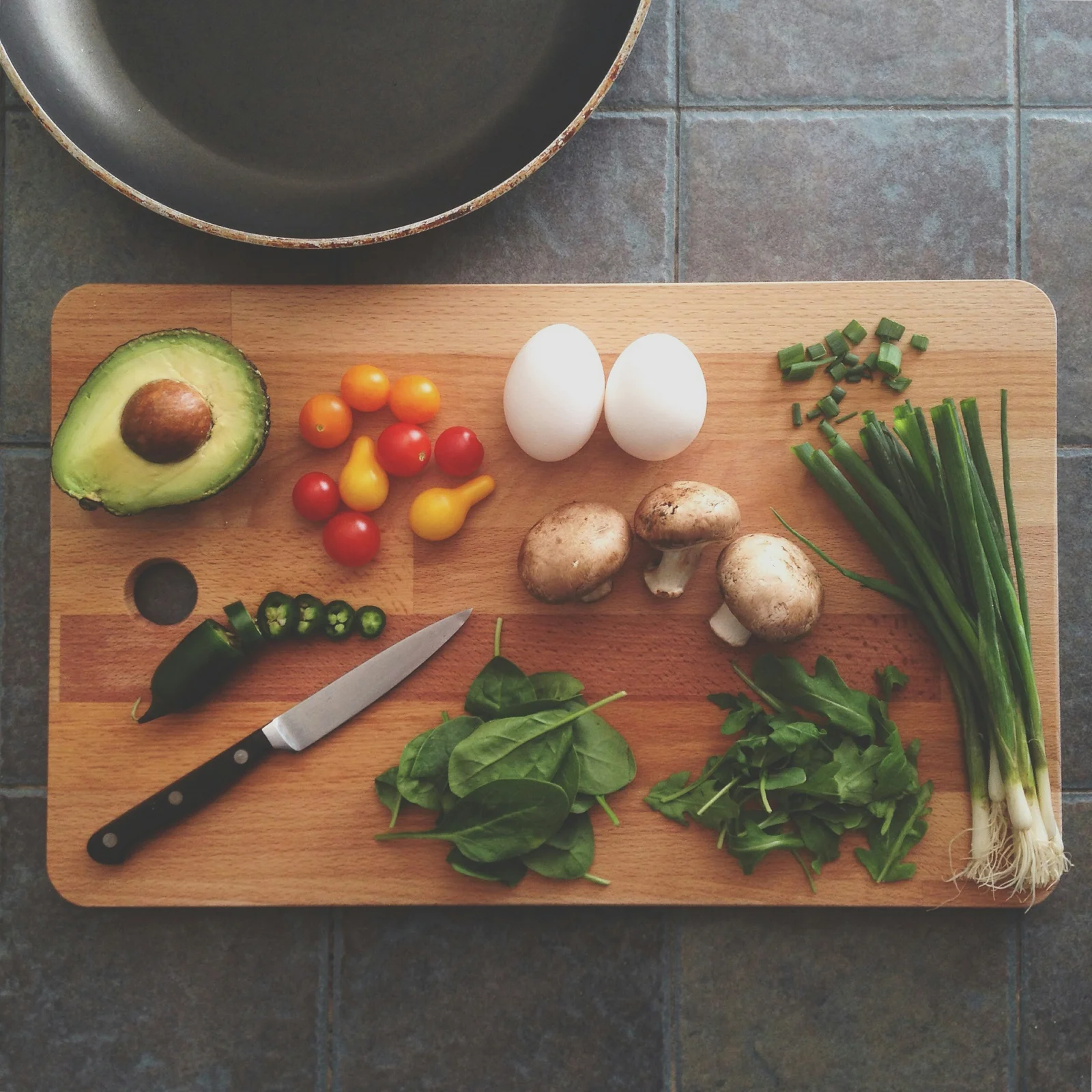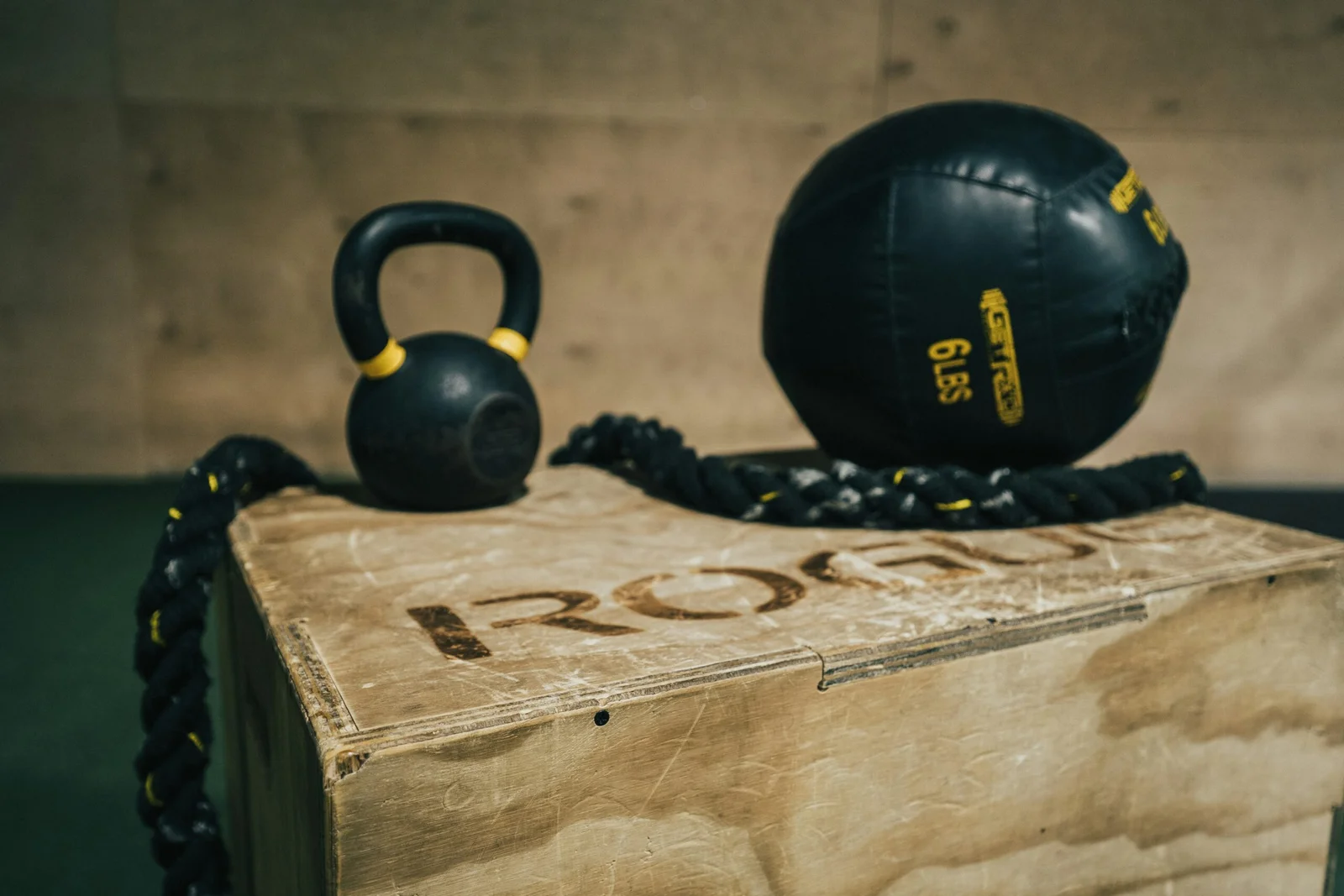Balancing Light and Rich Meals for Optimal Fitness
Introduction to the Importance of Nutrition in Fitness
Nutrition serves as a cornerstone in the pursuit of fitness and overall health. It is not merely about food consumption but encompasses understanding how various nutrients contribute to physical performance, energy management, and recovery processes. A well-balanced diet is pivotal for individuals engaged in regular exercise, assisting in building muscle, maintaining energy levels, and enhancing overall well-being.
In the context of fitness, meals can generally be categorized into light and rich compositions. Light meals, often lower in calories yet packed with essential nutrients, provide the necessary fuel for physical activities without overwhelming the digestive system. They are ideal for pre-workout snacks, promoting energy and endurance without causing sluggishness. Common examples include fruits, yogurt, and salads, which help sustain energy levels and prevent fatigue during exercise.
On the other hand, rich meals, which tend to be higher in calories and nutrients, play a crucial role in muscle recovery and growth. After intense workouts, the body requires replenishment of glycogen stores and repair of muscle tissue. High-protein meals, complex carbohydrates, and healthy fats are integral in this phase, providing the raw materials for muscle synthesis and recovery. Foods such as lean meats, whole grains, and healthy oils contribute significantly to post-workout nutrition.
Ultimately, understanding the synergy between light and rich meals can empower individuals to create meal plans that align with their fitness goals. By strategically incorporating the right types of meals, one can optimize energy levels, support muscle recovery, and improve overall athletic performance. As we delve deeper into the specific types of meals and their benefits, it is essential to appreciate the integral role of nutrition as a facilitator of fitness.
Understanding Light Meals and Their Benefits
Light meals are often defined as those that provide nourishment without overwhelming the body with an excessive number of calories. Typically characterized by being low in calories yet high in vitamins, minerals, and essential nutrients, these meals play a vital role in a fitness-oriented diet. By focusing on whole, unprocessed ingredients, light meals are designed to support physical health while ensuring that individuals maintain an ideal energy balance.
One of the primary advantages of incorporating light meals into a daily regimen is weight management. These meals can serve as effective tools for individuals aiming to lose or maintain their weight, as they often help reduce excess calorie intake without sacrificing essential nutrients. This approach enables a healthier lifestyle, allowing individuals to consume meals that are both satisfying and beneficial for their bodies. In addition, light meals can be tailored to meet individual dietary preferences, making it easier for people to adhere to their fitness routines.
Light meals also contribute positively to improved digestion. Foods that are high in fiber, such as fruits, vegetables, and whole grains, are commonly featured in light meals. This fiber content not only promotes a healthy gut but also aids in regulating blood sugar levels. As a result, individuals can enjoy sustained energy throughout the day, avoiding the crashes that typically result from consuming heavier, richer meals loaded with unhealthy fats.
Ultimately, the strategic incorporation of light meals into your diet can create a balanced approach to nutrition, supporting both fitness goals and daily energy needs. By prioritizing nutrient-dense options, you enhance your body’s performance, enabling you to achieve a healthier lifestyle while enjoying the foods you love.
Exploring Rich Meals and Their Role in Fitness
Rich meals, characterized by their calorie-dense nature, play a crucial role in a well-rounded fitness regimen. These meals often pack a variety of essential nutrients, making them significant for individuals looking to build muscle or recover from strenuous workouts. High in healthy fats, proteins, and carbohydrates, rich meals provide the energy needed for intense training sessions and facilitate muscle repair afterward. Understanding the importance of such meals can make a profound difference in one’s fitness journey.
The strategic incorporation of these calorie-dense meals is especially beneficial during periods of increased physical activity or when one is striving to gain muscle mass. Consuming rich meals post-workout can replenish glycogen stores and promote muscle recovery. This is vital for athletes and fitness enthusiasts who engage in regular, high-intensity training. For instance, a meal consisting of lean meats paired with whole grains and healthy fats can help fuel the body while also supplying the necessary nutrients to repair and build muscle tissues, making rich meals not only filling but also restorative.
Moreover, rich meals contribute to satiety, preventing individuals from feeling deprived during their fitness journeys. This can ultimately lead to improved adherence to dietary plans. The selection of nutrient-dense, calorie-rich foods allows one to enjoy a variety of flavors and textures, making it easier to maintain a balanced diet. Examples of such meals include quinoa bowls topped with avocado and grilled chicken or a hearty chili made with beans, lean meat, and plenty of vegetables. By strategically planning meals that pack a caloric punch, individuals can support their fitness goals while ensuring adequate nutrition.
Key Nutrients for Fitness from Light Meals
Maintaining an optimal fitness regimen necessitates an understanding of the key nutrients derived from light meals. These essential components include proteins, healthy fats, carbohydrates, vitamins, and minerals, each playing a crucial role in supporting fitness goals and enhancing overall health.
Proteins, often termed the building blocks of life, are fundamental for muscle repair and growth. Light meals that include sources such as lean meats, fish, legumes, and tofu can provide the necessary amino acids required for post-exercise recovery. Incorporating these protein-rich foods into lighter meals helps fitness enthusiasts to maintain muscle mass while promoting effective recovery after workouts.
Healthy fats are another vital nutrient source that should not be overlooked. Fats from sources like avocados, nuts, seeds, and olive oil are essential for energy production and absorption of fat-soluble vitamins. These nutrients support sustained energy levels during workouts and contribute to overall bodily functions, including hormone production and cellular health. Therefore, light meals that integrate healthy fats can enhance athletic performance while still keeping meals balanced.
Carbohydrates are often the focal point of energy for fitness enthusiasts. Light meals that comprise whole grains, fruits, and vegetables provide essential fiber and energy-boosting carbs. These nutrients not only fuel workouts but also aid in muscle recovery post-exercise. Prioritizing complex carbohydrates ensures a steady release of energy, allowing individuals to perform optimally during physical activity.
Vitamins and minerals, often found in abundance in colorful fruits and leafy greens, are crucial for maintaining overall health and well-being. They play a significant role in energy production, immune function, and muscle contraction. Including a variety of these nutrient-dense foods in light meals supports the body’s physiological processes, enhancing the fitness journey.
Through the careful selection of these key nutrients in light meals, individuals can effectively support their fitness objectives and foster a healthier lifestyle. This strategic approach emphasizes the importance of smart eating in achieving fitness goals while ensuring that the body receives adequate nourishment.
Nutritional Components of Rich Meals
Rich meals are often characterized by their elaborate ingredients and flavor profiles, but they also present a diverse range of nutritional components essential for maintaining an active lifestyle. At the core of these meals are macronutrients, which include proteins, carbohydrates, and healthy fats, each serving vital functions in supporting physical performance.
Proteins play a key role in muscle repair and growth, making them crucial for those engaging in regular physical activity. They are composed of amino acids, which are the building blocks of muscle tissue. Consuming rich meals that highlight protein sources such as lean meats, dairy, legumes, and nuts can substantially aid in muscle recovery and overall strength improvement. Additionally, proteins contribute to satiety, helping to control hunger and reduce the tendency to overeat.
Carbohydrates are another critical macronutrient found in rich meals, serving as the primary energy source for the body. Complex carbohydrates, such as whole grains, fruits, and vegetables, provide a steady release of energy, which is particularly beneficial for sustaining longer workouts or active periods. Proper carbohydrate intake helps maintain blood sugar levels, preventing fatigue and enhancing performance during physical activities.
Healthy fats, found in sources like avocados, olive oil, and fish, are equally important. They provide a dense source of energy and support crucial bodily functions, including hormone regulation and nutrient absorption. Including healthy fats in rich meals contributes to a balanced diet while promoting cardiovascular health.
Moreover, rich meals often contain various micronutrients, such as vitamins and minerals, which support multiple bodily processes. Antioxidants, frequently found in fruits and vegetables, play a significant role in combating oxidative stress, further supporting overall health and fitness. Together, these nutritional components create a harmonious balance, enhancing performance and recovery for those pursuing an active lifestyle.
Sample Light Meal Ideas for Active Individuals
Maintaining a balanced diet is crucial for active individuals, and light meals can be an excellent way to fuel the body without feeling weighed down. Here are some simple, nutritious light meal ideas that are not only easy to prepare but also provide the necessary nutrients for optimal fitness.
One popular option is a quinoa salad. To prepare, combine cooked quinoa with cherry tomatoes, cucumber, bell peppers, and fresh herbs like parsley or cilantro. Dress with a squeeze of lemon juice and a drizzle of olive oil for a refreshing taste. This meal provides a balance of carbohydrates, proteins, and healthy fats, making it ideal for post-workout recovery.
Another great choice is a vegetable stir-fry. Use a variety of colorful vegetables such as broccoli, carrots, and snap peas, and stir-fry them in a small amount of sesame oil. Add tofu or chicken for protein, and season with soy sauce or ginger for flavor. This dish is not only rich in vitamins and minerals but also allows for customization, as any preferred vegetables can be included.
A third option is a Greek yogurt parfait. Layer low-fat Greek yogurt with assorted berries and a sprinkle of granola. This meal is perfect for breakfast or a snack, delivering protein from the yogurt and antioxidants from the berries. Additionally, it can be tailored by using different fruits or adding nuts for extra texture.
For a quick snack, consider hummus with vegetable sticks. Hummus provides protein and fiber, while vegetables like carrots, celery, and bell peppers offer necessary vitamins. This combination is satisfying and can help bridge the gap between meals without excessive calories.
In conclusion, light meals can effectively support an active lifestyle by providing essential nutrients without heaviness. With these meal ideas, individuals can enjoy a variety of flavors while meeting their dietary preferences, ensuring they stay energized and ready for their next fitness endeavor.
Delicious Rich Meal Recipes for Muscle Recovery
Incorporating rich meals into a post-workout diet is essential for muscle recovery and replenishing energy stores. Here, we present some nutritious and satisfying recipes that cater specifically to the needs of athletes and fitness enthusiasts.
1. Quinoa and Black Bean Bowl
This hearty bowl is packed with protein and complex carbohydrates. To prepare, cook one cup of quinoa according to package instructions. In a separate pan, heat a tablespoon of olive oil, then sauté one diced onion and two minced garlic cloves until golden. Add one can of rinsed black beans and one cup of diced bell peppers, cooking until the vegetables are tender. Mix the quinoa with the sautéed vegetables and season with lime juice, cumin, and chopped cilantro. This meal provides an excellent balance of nutrients to support muscle recovery.
2. Creamy Chicken and Spinach Pasta
Start by cooking whole grain pasta according to instructions. In a skillet, cook two chicken breasts until browned and cooked through. Remove and set aside. In the same pan, add a tablespoon of butter and sauté two cups of fresh spinach until wilted. Stir in one cup of Greek yogurt and a splash of milk to create a creamy sauce. Combine the sauce with the cooked pasta and diced chicken, and season with garlic powder, salt, and pepper. This meal is rich in protein and provides healthy fats, vital for muscle repair.
3. Sweet Potato and Lentil Curry
This dish offers a unique combination of flavors and is packed with beneficial nutrients. Begin by dicing two sweet potatoes and cooking them in a pot with one tablespoon of coconut oil. Once tender, add one chopped yellow onion, two minced garlic cloves, and one tablespoon of ginger, sautéing until fragrant. Stir in one cup of red lentils and two cups of vegetable broth, simmering until the lentils are soft. Finally, add coconut milk and spices like turmeric and curry powder. Serve this curry over brown rice for a well-rounded meal that enhances recovery.
These rich meal recipes for muscle recovery not only provide essential nutrients but also tantalize the taste buds, encouraging athletes to prioritize their post-exercise nutrition.
Strategies for Balancing Light and Rich Meals
Achieving a balance between light and rich meals is crucial for maintaining optimal fitness while enjoying a variety of foods. One effective strategy is meal prepping, which involves planning and preparing meals in advance to ensure that healthy options are always available. By dedicating a few hours each week to prepare balanced meals, individuals can effortlessly combine light and rich ingredients, ensuring they meet their nutritional goals without succumbing to impulsive eating decisions.
Portion control also plays a vital role in balancing meals. Understanding appropriate serving sizes can help individuals indulge in richer foods without overconsumption. When enjoying richer meals, consider using smaller plates, which can create the perception of a fuller portion while actually reducing the amount eaten. This simple technique can keep calorie intake in check while allowing for occasional indulgence.
Mindful eating practices further enhance the ability to balance light and rich meals. Taking the time to savor each bite and listen to hunger cues promotes better digestion and decreases the likelihood of overeating. Engaging in conversations during meals and eliminating distractions, such as phones or television, can help individuals remain present and appreciate their food, which in turn makes it easier to identify when they are satisfied.
Combining these practical strategies—meal prepping, portion control, and mindful eating—creates a comprehensive approach to balancing light and rich meals. Implementing such strategies not only supports nutritional health but also contributes to long-term fitness goals, thereby allowing for a satisfying and sustainable relationship with food. Staying proactive and intentional about meal choices is key to achieving this balance and enjoying a diverse diet.
Conclusion: Finding the Right Meal Balance for You
In the pursuit of optimal fitness, the balance between light meals and rich meals is crucial. Throughout this article, we have examined the significance of incorporating both types of meals into a well-rounded diet tailored to individual fitness goals. Light meals, often characterized by lower calorie content and nutrient density, play an essential role in providing sustained energy without feeling bloated. These meals can include salads, smoothies, or vegetable-based dishes that not only promote digestive health but also help maintain a healthy weight.
On the other hand, rich meals, which typically contain higher levels of calories, proteins, and healthy fats, are equally important for muscle recovery and energy replenishment, especially after intense workouts. Foods such as lean meats, whole grains, and nutrient-dense sources of fat like avocados or nuts contribute significantly to overall strength and endurance. Striking a balance between these two meal types can enhance performance and recovery, making it essential for athletes and fitness enthusiasts alike.
Furthermore, personalized nutrition plays a critical role in determining the ideal combination of light and rich meals. Each individual’s body responds differently to various foods, making it important to experiment with different meal compositions to discover what works best. This experimentation can include observing how certain meals affect energy levels during workouts, recovery times, and overall wellbeing. By keeping track of personal experiences and making informed choices, readers can develop a customized approach to their dietary habits.
Ultimately, the journey toward optimal fitness is deeply personal and should reflect individual preferences and needs. By finding the right meal balance, one can ensure they are fueling their body adequately while also enjoying the process of exploring diverse and nutritious food options.







